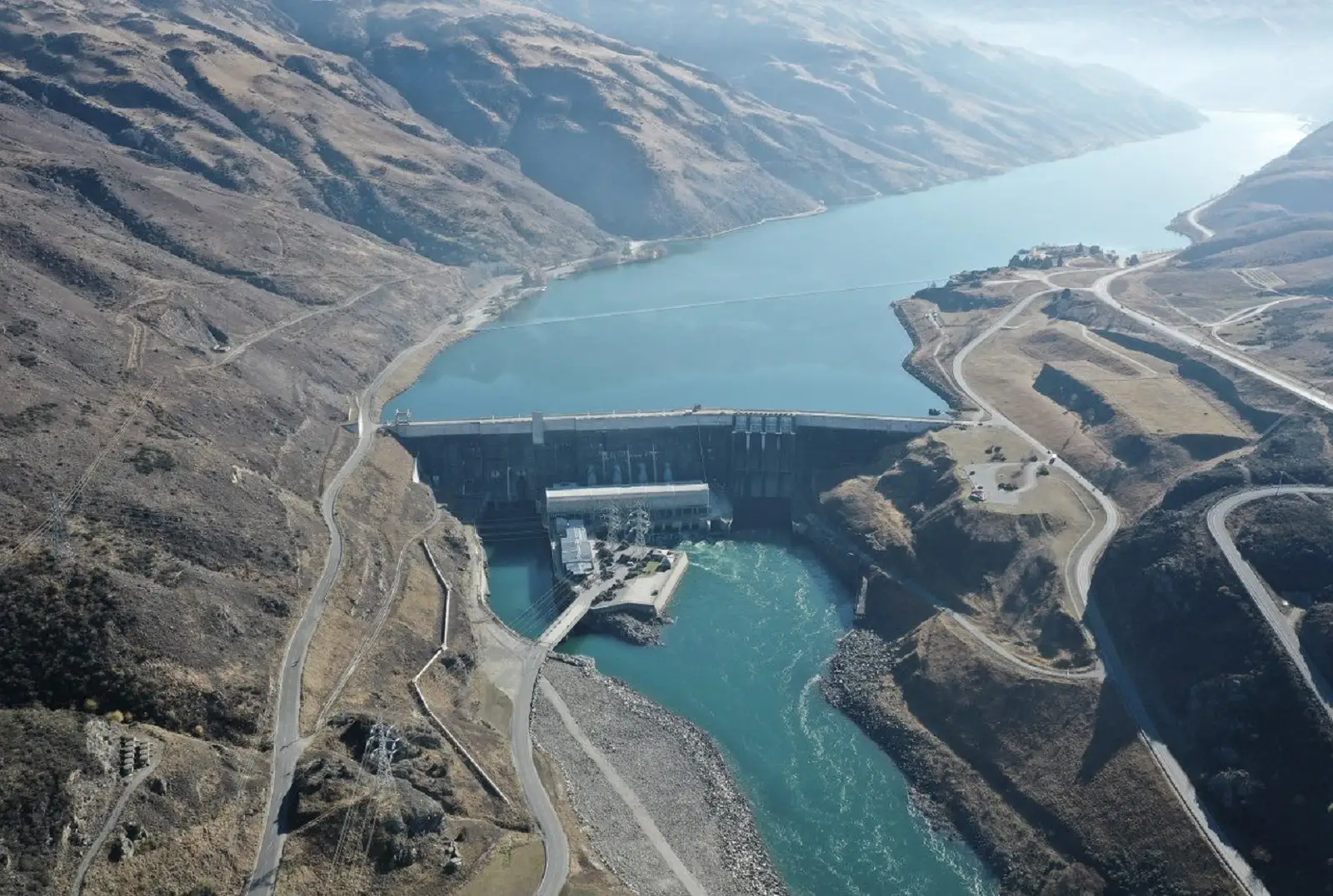Hydroelectricity in New Zealand
On average, hydroelectricity currently provides 57% of New Zealand’s electricity needs each year. Hydro production is variable because of varying amount of rainfall.
Hydroelectricity systems are very long-lived, and we expect that hydro generation will continue to provide the backbone of New Zealand’s electricity system.
How much of our electricity comes from hydro?
2010-2021 data is sourced from MBIE. Future indications come from Climate Change Commission and New Zealand Energy Scenarios TIMES-NZ 2.0 modelling.
- 57 % 2010-2021 average
- 46-50 % 2035
How does hydroelectricity work?
Hydroelectric schemes use gravity to drive water through turbines, converting that energy into electricity. Water from streams, rivers or dams flows down steep pipes into turbines, which drive power generators. The water then flows back into a river or stream below the hydro plant.
Storage-based and run-of-river systems
Storage based hydro schemes have large lakes that usually store enough water for schemes to be switched on and off as required.
Run-of-river systems don’t have dams and can only generate based on the amount of water flowing down the river.
Large and small-scale generation
Large scale generation schemes (above 10 MW capacity) are more difficult and expensive to build but produce large amounts of electricity at a low cost.
New Zealand's largest hydro power station is in Manapōuri which has 850 MW of installed capacity – which generates enough electricity each year to supply around 620,000 New Zealand homes.
Smaller scale generation (below 10 MW capacity and including micro-hydro schemes that generate less than 10kW) can be cheaper and easier to build and get consent for, however will generally generate less electricity at a higher cost.
The future of hydroelectricity in New Zealand
Hydro generation is not expected to grow significantly as most large-scale development opportunities have already been taken, and there is keen public interest in preserving our waterways. The percentage of electricity supply by hydro generation is expected to decrease as wind and solar capacity is added more rapidly.

Advantages and limitations of hydroelectricity
Advantages
-
Fully controllable – Water stored in dams can be turned into electricity within seconds, making hydro one of the only fully controllable and dispatchable renewable electricity sources.
-
Reliable – Where enough water can be stored, hydroelectricity is reliable and consistent.
-
High EROI – Hydropower has the highest energy return on energy invested (EROI) out of all energy sources.
-
Affordable – Hydropower is an affordable source of energy that costs less than most.
Limitations
-
Impact – Building dams and creating new lakes has environmental, economic, social and cultural implications that should be considered.
-
Dry year risk – New Zealand has relatively small hydro storage capacity, and rainfall patterns that can vary greatly from year to year. If there is a shortage of rainfall before or during winter, there is a risk of insufficient generation capacity to provide for demand. When this occurs, some form of back-up is needed, and this is currently provided by fossil fuel generation. New Zealand is taking steps to explore renewable options to store energy for a dry year – including pumped hydro at Lake Onslow among other options. Read more: NZ Battery Project | MBIE(external link)
EECA and hydroelectricity
EECA’s work on the TIMES-NZ future energy scenarios model helps us understand how hydroelectricity will fit into the future energy mix in New Zealand. EECA built the model along with BusinessNZ Energy Council and The Paul Sherrer Institute. The model is used to inform policy decisions on energy and climate action.
The modelling suggests hydroelectricity will continue to be the backbone of New Zealand’s electricity grid, although proportionally generation from hydro will decrease as wind and solar increase.
Hydroelectricity for business
If you have access to the right stream or waterway, a small-scale hydroelectric system can be a cost-effective and reliable way to generate low carbon electricity for your business.
